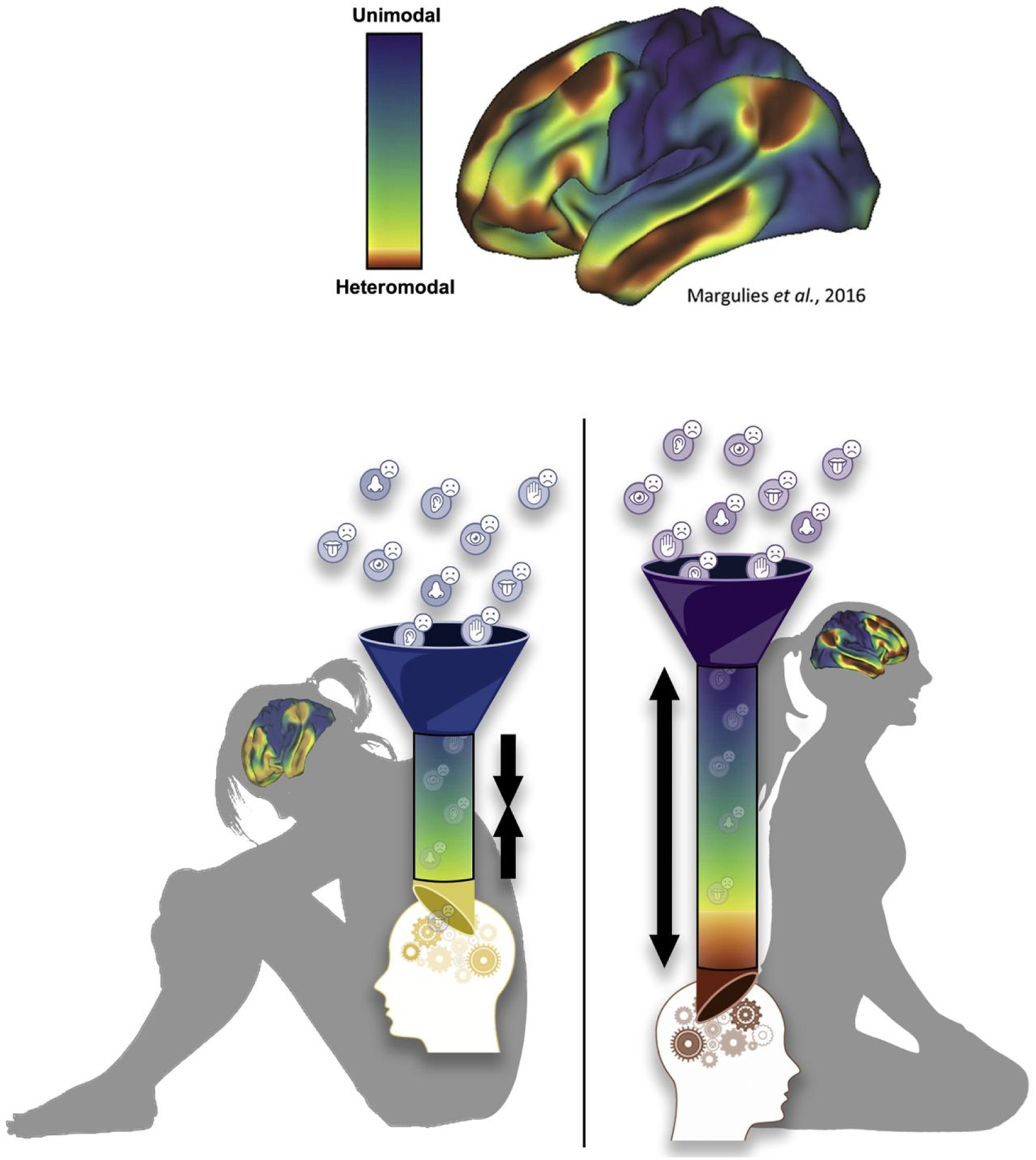Figure 1.

Depiction of hypothesized mapping of macroscale hierarchical gradients onto the individual’s experience in ongoing goal pursuit. Top panel depicts the distribution of functional cortical networks (left) across the macroscale hierarchical gradient (right) following from Margulies et al. (2016). Bottom panel depicts how hypothesized individual differences in the macroscale gradient influence goal pursuit based on perceptions of goal attainment success as well as associated affective and motivational feedback. As detailed in the text, a relatively compressed gradient (left) is maladaptive because negative experiences of goal pursuit failure, being functionally closer to our internal representations of goals and intrinsic motivations through a shorter gradient, unduly influence them and lead to perseveration over past failures and a self-regulatory bias toward preventing negative outcomes. A relatively expanded gradient (right) is adaptive because our negative experiences would be functionally more distant from our internal representations of goals and intrinsic motivations through a longer gradient, affording the opportunity to further parse the experience of goal pursuit failure before it can influence subsequent goal pursuit strategies thereby cultivating greater resilience.
